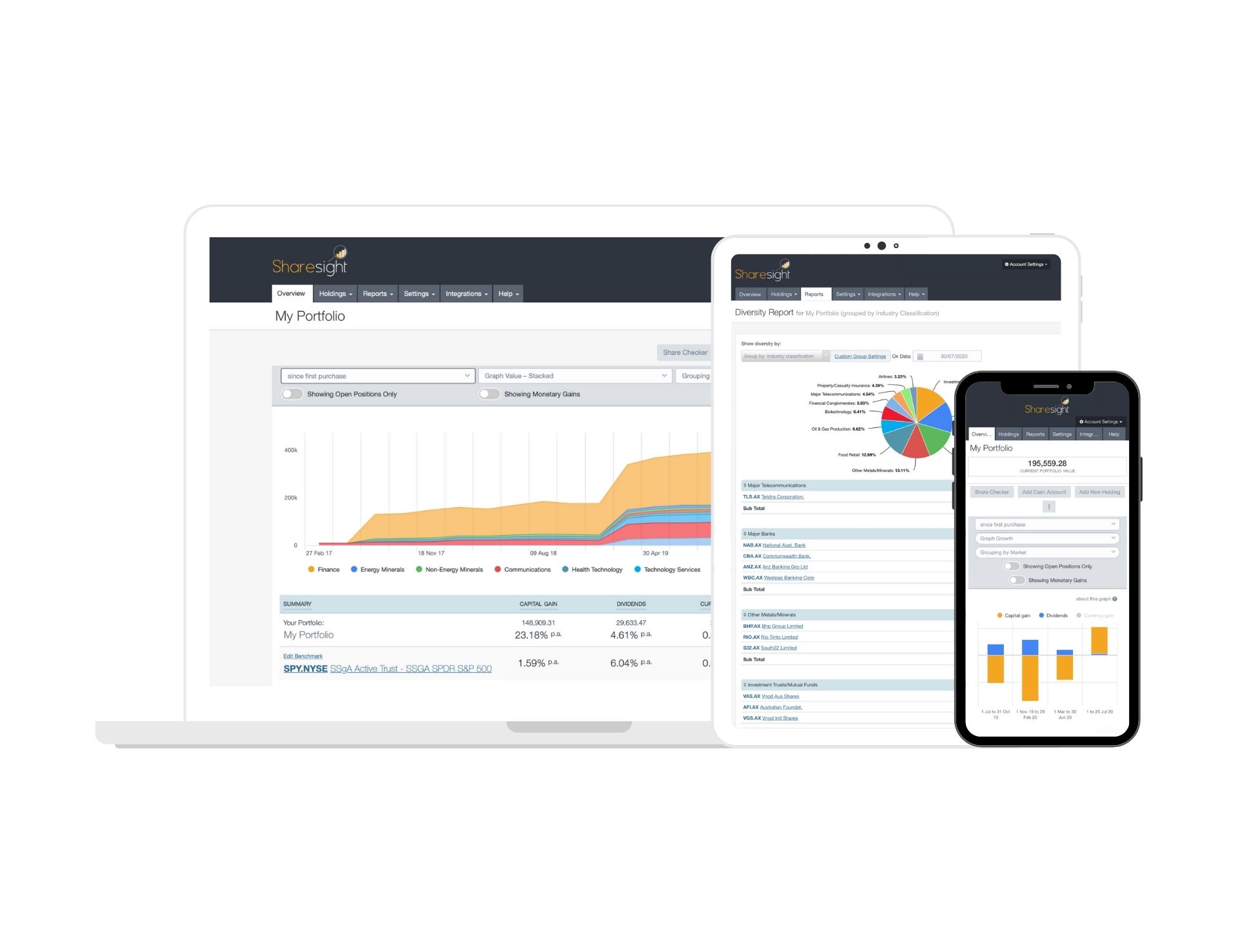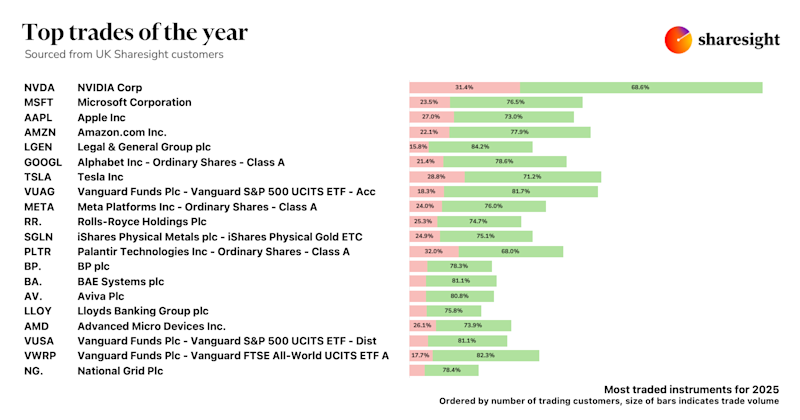How mergers and acquisitions affect your investment performance
When a merger or acquisition is announced for one of your stocks, it’s important to understand how this impacts your performance data, and what you need to do to track these stocks in your portfolio. While it may seem like this is all taken care of by your broker, this is not necessarily the case, with mergers and acquisitions often resulting in incorrect numbers and lost data in your brokerage account. To learn more about how brokers handle corporate mergers and acquisitions, why this leads to inaccurate performance figures (and tax records), plus how you can properly track these corporate actions in your portfolio, keep reading.

What are mergers and acquisitions?
Mergers and acquisitions are a type of corporate action that can affect the holdings in an investor’s portfolio. An "acquisition" refers to a situation in which one company purchases another company and assumes control as the new owner of that company. A “merger”, on the other hand, refers to a situation in which two companies of a similar size come together as a singular entity, rather than operating as two separate companies. These phrases are sometimes used interchangeably as in many cases, mergers and acquisitions occur in tandem. This is not always the case, however.
These corporate actions can have implications for shareholders. The specifics of these implications will differ on a case-by-case basis, but to understand how these corporate actions can impact the performance of your investments, let’s look at a real-world example.
The Block (NYSE: SQ) and Afterpay (ASX: APT) merger
In early 2022, US digital payments firm Block officially acquired Australian buy-now-pay-later (BNPL) giant Afterpay, with the intention to merge the two companies as part of a multi-billion dollar deal. As per the Scheme Implementation Deed, Block agreed to establish a secondary listing on the ASX, allowing Afterpay shareholders to trade Block shares via CHESS Depository Interests (CDIs). Afterpay delisted from the ASX and shareholders were given the option to convert their shares into NYSE-listed Block Class A common stock or the above-mentioned ASX-listed CDIs (ASX: SQ2).
Why you shouldn’t rely on your broker to track mergers
Before any mergers have even occurred, relying solely on your broker’s performance figures can be misleading, as most brokers’ performance metrics typically consist of daily price movements and capital gains measured from the stock’s purchase date. Without the inclusion of key factors such as dividends, currency fluctuations and brokerage fees in your performance calculations, you are already failing to see the full picture of your portfolio’s performance. For more information about how your broker's performance data can be misleading, see this article.
Once a merger or acquisition has occurred, relying on your broker to handle these corporate actions in your portfolio can also result in inaccurate performance data. This is because once the corporate action takes place, many brokers will simply overwrite your previous data and replace it with the new holding. For example, if you held Afterpay shares with a return of 190% prior to the merger, once you were allocated your new ASX-listed CDIs, Afterpay would be removed from your portfolio, replaced by Block shares with a new return figure and cost base. This essentially wipes out that 190% return. If you received a combination of shares and cash in the merger, it is also likely that this will not be reflected in your brokerage account.
Not only can this create problems when calculating your Capital Gains Tax (CGT), but it also misrepresents your performance as an investor. The screenshot below, for example, shows a portfolio that has been affected by the Afterpay/Block merger. When Afterpay is included in the portfolio’s performance figures, the total return is 38.46%. If Afterpay is removed, however, this figure is only 27.42%. This is an important distinction that can make a significant difference when evaluating your investment strategy.
Sharesight users have the option to view their total return inclusive of open and closed (sold) positions.
Another problem with depending solely on your broker is that in many cases, they will not notify you of the merger ahead of time, if at all. This means that unless the stock in question is relatively large and high-profile, you may not even find out about the merger until after it has already occurred, making it too late to make an informed decision on whether to buy or sell the original stock. Therefore, investors who are tracking their shares in a spreadsheet or relying on their broker will also need to keep track of Annual General Meetings (AGMs) and search for news for the stocks in their portfolio. This can be tedious, especially for investors with large portfolios.
Easily track mergers in your Sharesight portfolio
With Sharesight’s online portfolio tracker, it’s easy for investors to stay informed about upcoming mergers and acquisitions and keep track of these corporate actions in their portfolio. This allows investors to make informed investment decisions, while also preserving their tax records and making it easier to calculate CGT.
Receive alerts about upcoming corporate actions
Sharesight users can elect to receive email notifications about a range of corporate actions, including stock splits, dividends, company name changes and mergers and acquisitions. This can be activated via the Alert Settings in the Holdings tab.
Investors can also view the latest news for holdings in their portfolio via Sharesight’s RSS feed function, which provides news coverage for stocks on the ASX, LSE, NYSE, NASDAQ and other key US markets.
Adjust for mergers in your portfolio
Once a merger has occurred, this can be easily tracked using Sharesight’s merge feature. Simply click into the relevant holding, scroll down to ‘Holding Settings’ and select ‘Merge this holding’. You only need a few key details to initiate the merge in your portfolio, as seen in the screenshot below.
Note: This feature applies to shares which are subject to 100% rollover relief, such as Afterpay/Block. To handle a merger without rollover relief, you can add buy and sell trades against the original stock and the new stock, as described in this article.
To track a merger in their Sharesight portfolio, investors simply need to enter the merger date, new holding ticker and new quantity of shares.
Investors who have received a combination of shares and residual cash in a merger can also track their cash payment in Sharesight by clicking into the merged holding and adding a new dividend with details of the payment.
Once the merge has been completed, investors will retain performance data and records for the original stock, while also tracking the new merged stock with an updated cost base carrying across from the original stock, as well as any records of residual cash received in the merger. This allows investors to accurately calculate Capital Gains Tax (CGT) on their investments – saving time (and confusion) at tax time.
Start tracking your performance with Sharesight
Thousands of investors worldwide are using Sharesight to track the performance of their stock portfolio and make better, more informed investment decisions. If you’re not already using Sharesight, what are you waiting for? Sign up for Sharesight so you can:
-
Track all of your investments in one place, including stocks, ETFs, mutual/managed funds, property and even cryptocurrency
-
Automatically track your dividend and distribution income from stocks, ETFs and mutual/managed funds
-
Run powerful reports built for investors, including Performance, Portfolio Diversity, Contribution Analysis, Multi-Period and Multi-Currency Valuation
-
Easily share access of your portfolio with family members, your accountant or other financial professionals so they can see the same picture of your investments as you do
Sign up for a FREE Sharesight account and get started tracking your investment performance (and tax) today.
Disclaimer: The above article is for informational purposes only and does not constitute a specific product recommendation, or taxation or financial advice and should not be relied upon as such. While we use reasonable endeavours to keep the information up-to-date, we make no representation that any information is accurate or up-to-date. If you choose to make use of the content in this article, you do so at your own risk. To the extent permitted by law, we do not assume any responsibility or liability arising from or connected with your use or reliance on the content on our site. Please check with your adviser or accountant to obtain the correct advice for your situation.

FURTHER READING

Sharesight users' top trades – December 2025
Welcome to the December 2025 edition of Sharesight’s monthly trading snapshot, where we look at the top buy and sell trades by Sharesight users over the month.

Top trades by UK Sharesight users in 2025
Welcome to the 2025 edition of our UK trading snapshot, where dive into this year’s top trades by the Sharesight userbase.

Top trades by global Sharesight users in 2025
Welcome to the 2025 edition of our global trading snapshot, where we dive into this year’s top trades by Sharesight users around the world.